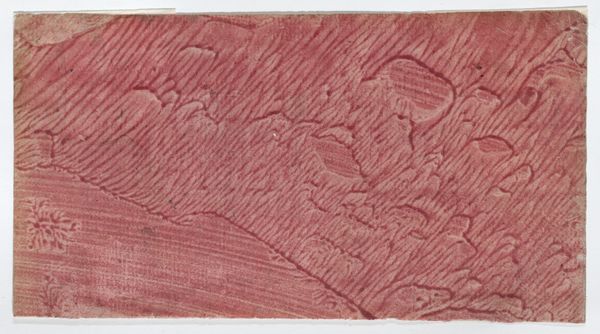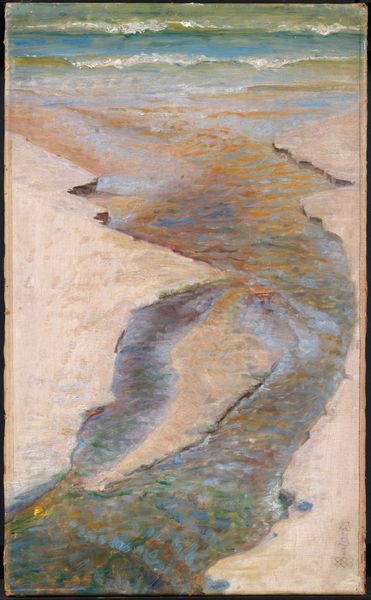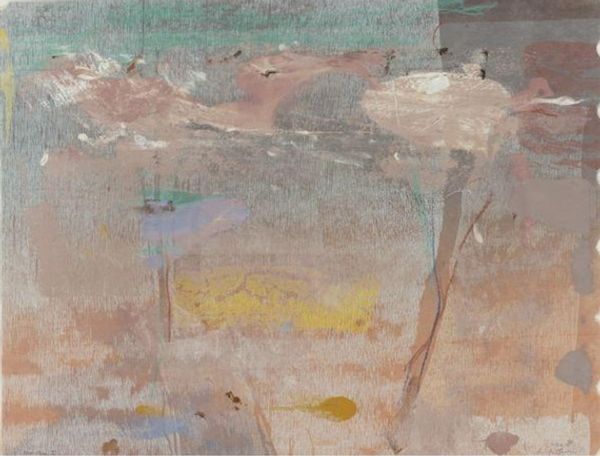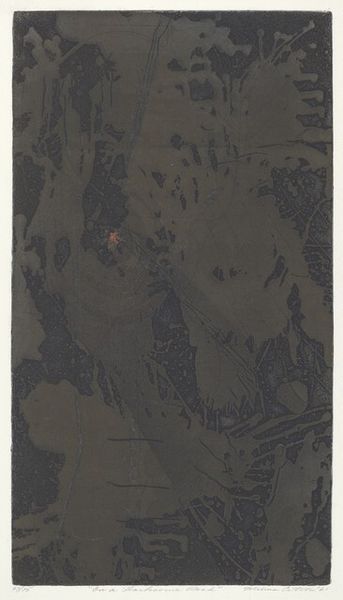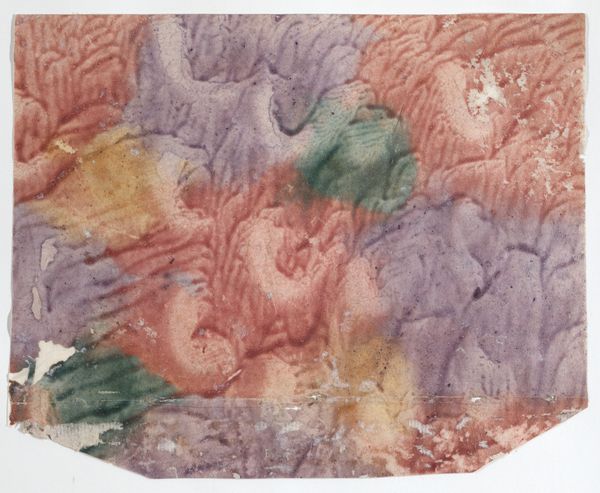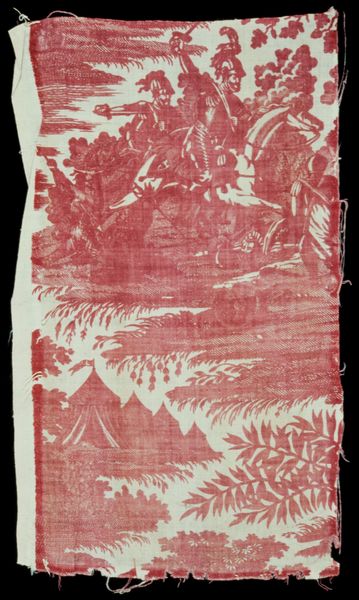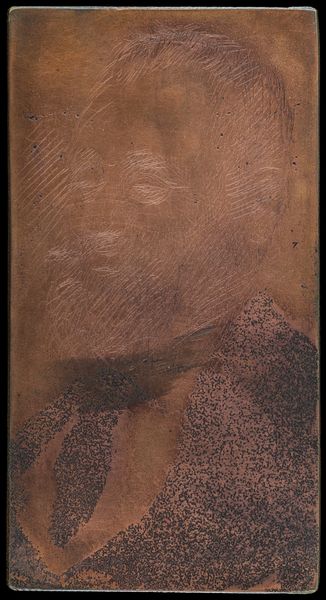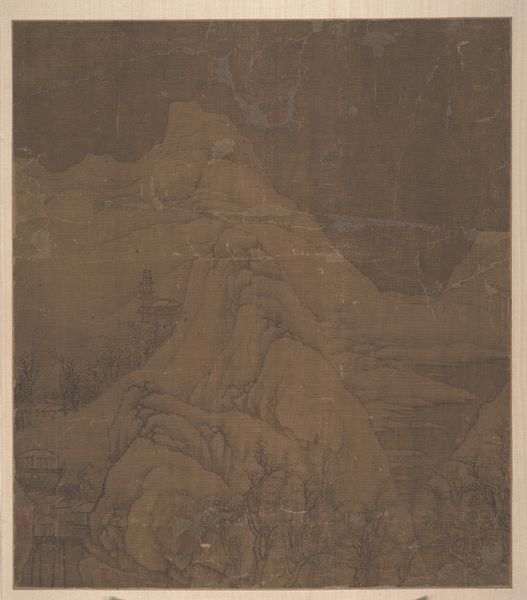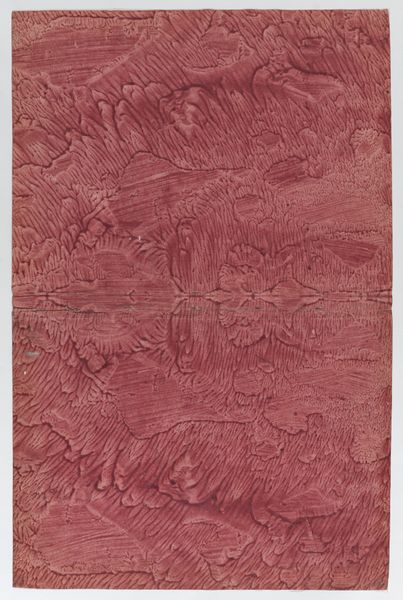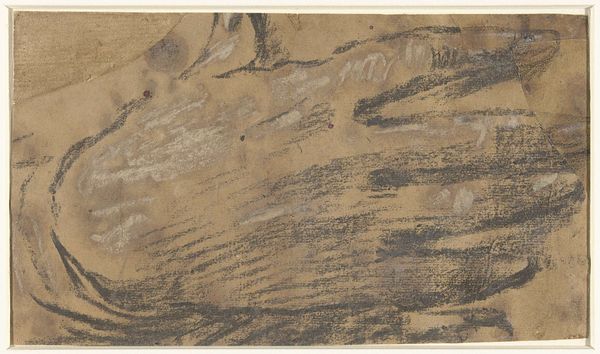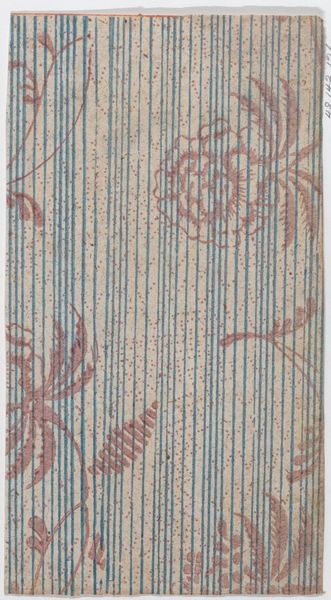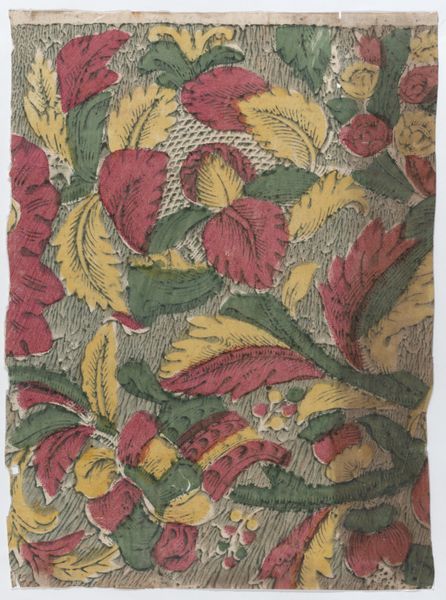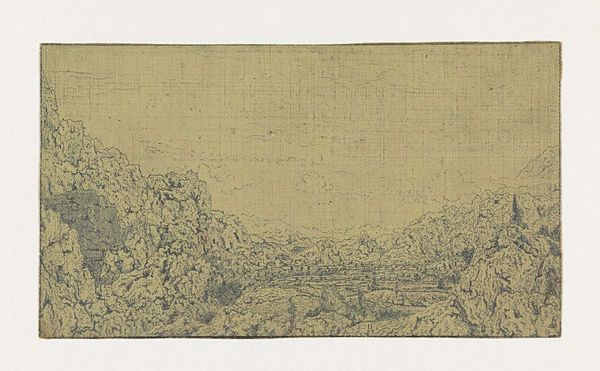
drawing, mixed-media, print, paper
drawing
mixed-media
landscape
paper
underpainting
france
post-impressionism
mixed media
watercolor
Dimensions 204 × 117 mm (image/primary/secondary support)
Curator: This mixed-media work on paper, held at the Art Institute of Chicago, is entitled "Reclining Tahitian (fragment)." Paul Gauguin created it around 1894, a period of significant exploration in his artistic career. Editor: It feels almost unfinished, raw. I am struck by how Gauguin uses a limited color palette—earthy browns, reds, and blues—to evoke a sense of warmth and tranquility, although there is something unsettling about it. Curator: That's perceptive. Consider Gauguin’s artistic process. He uses mixed media, layering watercolors, perhaps even some pastel or crayon. This experimental approach reflects his search for an authentic and primal form of expression outside the constraints of traditional academic painting. We have to ask ourselves what part does it play to know the paper, the brushes and how were these made? What of Gauguin’s labour? Editor: Yes, that rawness makes it more compelling. What's fascinating to me is the absence of the figure’s complete form. The "fragment" implies a larger narrative, forcing the viewer to fill in the missing pieces. What about this fragment, what's the symbolism behind this? It's evocative of paradise lost perhaps or paradise in a state of incompleteness, reflecting Gauguin’s complex relationship with the Tahitian culture he romanticized. Curator: His relationship with the Tahitian people was problematic, indeed. Gauguin consciously rejected industrialised society for what he saw as a more ‘primitive’ lifestyle, but, of course, he could only do that with access to the material comforts and distribution networks of colonial France. This image reflects those uneasy economic and labour relationships. How reliant was he on trade, production, exchange? Editor: Right. I find this “fragment” fascinating. Is this about the artist and his experience? Or the islands' indigenous people. It is the exotic as fantasy; a dream-like vision with his bold, flat planes of color. Curator: It encapsulates the tensions between his artistic vision and the socio-political realities of colonialism. I think we begin to glimpse this unease if we reflect on these elements. Editor: The suggestive title beckons a reflection on cultural memories and continuity of place through images that continue to hold weight today. Curator: Yes, analyzing Gauguin's method of production alongside the symbolic fragment really opens up avenues of questioning for modern viewers.
Comments
No comments
Be the first to comment and join the conversation on the ultimate creative platform.

